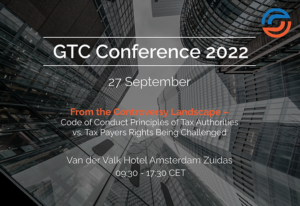In Taylor Lohmeyer Law Firm PLLC v. United States,1 the Taylor Lohmeyer Law Firm (the “Firm”) unsuccessfully challenged a John Doe summons issued by the IRS, which sought to attain the names of the Firm’s clients. On May 15, 2019, the Western District of Texas rejected the Firm’s petition to quash the summons, instead granting the Government’s petition to enforce. In doing so, the court rejected the Firm’s argument that the attorney-client privilege protected the client names. However, in light of the import of the issue, the court granted a stay in enforcement of the summons on October 3, 2019.2
Background
The Firm is an estate planning practice located in Texas. In June 2017, the IRS entered into a closing agreement with a former client of the Firm, Taxpayer-1, who admitted that he had earned over $5 million in unreported income on assets held in offshore trusts. Taxpayer-1 had allegedly concealed his connection to the offshore structures on the advice of the Firm.
Armed with this information, and with the suspicion that the Firm had provided similar advice to others, the IRS investigated other clients of the Firm, believing them to have used the Firm to create and maintain foreign bank accounts and foreign entities as a tactic to conceal taxable income offshore. The IRS did not, however, know the identities of the Firm’s clients, and therefore sought a John Doe summons to force the Firm to reveal the identity of all clients between 1995 through 2017 who had used the Firm to “create and maintain foreign bank accounts and foreign entities that may have been used to conceal taxable income in foreign countries.”3
To obtain the summons, the Government appeared in an ex-parte proceeding in October 2018. There appeared to be no dispute that the Government met three of the Powell4 requirements. However, in order for the court to grant the petition to enforce, the Government bore the burden of establishing that the summons was issued for a legitimate purpose and sought information relevant to that purpose. It had to also show that the IRS had followed the proper administrative steps to acquire the summons and that it did not already have the information sought. Once the Government established its prima facie enforcement case, the burden shifted to the Firm to challenge enforcement on any appropriate ground, including by proving that the government did not meet its burden of proof or that the enforcement would constitute an abuse of process. Abuse in this context includes taxpayer harassment, putting pressure on the taxpayer to settle a collateral dispute, or obtaining information solely for a criminal prosecution under the guise of a civil liberty investigation.
Analysis
In determining that the summons had a legitimate purpose, the court relied on an affidavit provided by an IRS agent, which stated that there is a widespread practice of using offshore entities and foreign financial accounts for offshore tax evasion. The affidavit specified that the Firm had played a key role in helping taxpayers operate offshore, which was the impetus for the investigation into the identity and correct income tax liability of the Firm’s clients who had used such structures. This purpose was legitimate, and the summons was relevant to that purpose because it sought the identities of those suspected clients. The IRS did not already have this information and it had used the correct administrative steps.
The Firm attempted to rebut the prima facie showing of enforceability by claiming that the IRS affidavit contained “inaccuracies.” However, because the standard for summons issuance is a reasonable basis standard, the court found that the summons issuance was proper. The reasonable basis for issuance of the summons was satisfied based on the interview of Taxpayer-1, as well as a former partner of the Firm, who described client services that the Firm had provided, which, according to the IRS, were “hallmarks of offshore tax evasion.”5 This was sufficient to meet a reasonable basis standard.
Attorney-Client Privilege
The Firm’s primary challenge to the John Doe summons was that the information sought by the summons was protected by attorney-client privilege. The Firm argued that although a client’s identity is not normally within the privilege, these circumstances gave rise to an exception that operates when disclosure of the client’s identity would supply “the last link in an existing chain of incriminating evidence likely to lead to the client’s indictment.”6 The summons sought identities based on attorney advice and legal services. The Firm relied on United States v. Liebman,7 in which the court held that because Government was already aware of the advice the law firm had provided its clients, disclosing the client’s name “would disclose the essence of a confidential communication.”8 To support this, the Firm provided a sampling of redacted client billing records to show the legal services rendered, which were similar to those provided to Taxpayer-1. It also produced a memorandum and supporting declaration from a partner at the Firm, which detailed the types of legal services the firm provided, the types of structures used, and the nature of the Firm’s client relationships. Because the IRS already knew of the legal content of the advice, the Firm argued that the Liebman exception should apply and the attorney-client privilege should protect the client identities.
The IRS maintained that attorney-client privilege did not apply for several reasons. First, the summons did not seek privileged information because it did not seek legal advice. Second, claiming privilege necessitates a privilege log with specific objections. Finally, the Liebman exception did not apply because the IRS was not aware of the content of the communications. To protect all client names, the Firm would have to demonstrate that all clients received the same privileged communications as Taxpayer-1, such that disclosing their identities would essentially be disclosing privileged communications. But here, the client group was not defined by the receipt of certain legal advice, but rather by whether the Firm formed foreign entities or accounts on behalf of those clients.
The court agreed with the IRS, mainly because of the Firm’s blanket assertion of privilege and because of the lack of a privilege log. The court found that the redacted billing statements proved only that the Firm rendered some legal, and therefore protected, services. This was insufficient, because there were 32,000 responsive documents for which the Firm claimed a privilege, but no privilege log. Thus the narrow exception did not apply.
Accordingly, the court rejected the Firm’s assertion of attorney-client privilege and granted the Government’s counter petition to enforce the John Doe summons.
The Stay
On October 3, 2019, the Firm moved for a stay pending appeal of the court’s order enforcing the summons. Usually, an applicant requesting a stay would be required to show that the applicant is likely to succeed on the merits and will be irreparably injured absent a stay. Courts consider whether other interested parties will be substantially injured, and where public interest lies. However, when there is a “serious legal question involved” and the balance of the equities heavily favors a stay, the applicant need only show a “substantial case on the merits.”
Here, the court found that there is a serious legal question involved for which the Firm had shown a substantial case on the merits. The summons sought a broad range of documentation arguably protected by the privilege, and the court lacked binding legal precedent. Moreover, the Firm would suffer irreparable harm if the summons were enforced, while the IRS, should it win on appeal, would be in substantially the same position as if the summons were enforced immediately. The court stayed enforcement of the summons, pending appeal. The appeal will be heard by the Fifth Circuit Court of Appeals.To view all formatting for this article (eg, tables, footnotes), please access the original here.





